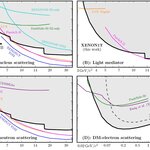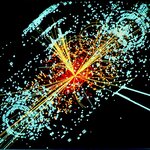Physics

In the world of government-funded science, there is usually no applied outcome, no direct benefit to the public, and so the (1) struggle to be relevant (which in practical terms means continue to be allowed to do it) is real. As a result, there is no greater conflict than between those who recognize the need to popularize science and those who want it to be what they envision as pure and bereft of populist catering.
Dr. Leon Lederman
In his history of particle physics, The God Particle: If the Universe Is the Answer, What Is the Question? he wrote that it got the…

I'll admit, I wanted to rather title this post "Billionaire Awards Prizes To Failed Theories", just for the sake of being flippant. But in any joke there is a little bit of truth, as I wish to discuss below.The (not-so-anymore) news is that the "Special Breakthrough prize" in fundamental physics, instituted a decade ago by Russian philantropist Yuri Milner, and then co-funded by other filthy wealthy folks, recently went to three brillant theoretical physicists: Sergio Ferrara, Dan Freedman, and Peter van Nieuwenzhuizen, who in the seventies developed an elegant quantum field theory,…

A new paper states that Einstein still holds up "for now" but that Newton is wrong.
The reason the authors believe Einstein’s general theory of relativity is weak is because it cannot fully explain gravity inside a black hole - and though no one has experimented inside a black hole to get measured data they believe the theory must come first, which happened with Einstein but not with Newton.
There is certainly an element of truth to both. When Newton did his groundbreaking work he explained the world according to natural laws but did not have data on planetary gravitation or the sub-atomic…

Fundamental Theoretical Physics is the driver of big science projects. Confirming old theories and testing new theories is how science advances. That said what do we really do when part of big science projects? The stereotype of the theoretical physicist is of a lone genius working in front of a chalkboard, or envisioning the mathematics written in brilliant light in the air in front of them, or dreaming of the solution to a deep problem. This does really happen. Theoretical physics is where the lone genius stereotype comes close to being true. Even then, it has…

Our current understanding of the Universe includes the rather unsettling notion that most of its matter is not luminous - it does not clump into stars, that is. Nobody has a clue of what this Dark Matter (DM) really is, and hypotheses on what it could be made of are sold at a dime a dozen. On the other hand, we clearly see the gravitational effects of DM on galaxies and clusters of galaxies, so the consensus of the scientific community is that one of those cheap theories must be true. What make this very close to a dream situation for an experimental scientist is the fact that we do have…

Have you ever wondered about the colors you see in these moments? What sunlight actually is? Yes, it's light from the Sun but so much more than that. Sunlight is both light and energy. Once it reaches Earth, we call this energy, "insolation," a fancy term for solar radiation. The amount of energy the Sun gives off changes over time in a never ending cycle. Solar flares (hotter) and sunspots (cooler) on the Sun's surface impact the amount of radiation headed to Earth. These periods of extra heat or extra cold (well, colder by Sun standards...) can last for weeks, sometimes months.
The beams…
While you and I may have been lagging behind a bit as of late, excused by a particularly hot July, the CMS collaboration has kept grinding its data, producing exquisite new results from the large amounts of proton-proton collisions that the experiment has been collecting during Run 2, i.e. until last year. Of course, the process of going from subatomic collisions to submitted papers is a long and complex one. The first part of the journey involves triggering, storage, and reconstruction of the acquired datasets, and reduction of the data into an analysis-friendly format. While this might…

Deep inside the largest and deepest gold mine in North America scientists are looking for dark matter particles and neutrinos instead of precious metals.
The Homestake Gold Mine in Lawrence County, South Dakota was a going concern from about 1876 to 2001. The mine produced more than forty million troy ounces of gold in its one hundred and twenty-five year history, dating back to the beginnings of the Black Hills Gold Rush.
To give its humble beginnings a bit of context, Homestake was started in the days of miners hauling loads of ore via horse and mule and the battles of the Great Sioux…

Andras Kovacs studied Physics at Columbia University. He currently works as CTO of BroadBit Batteries company. Andras recently wrote an interesting book, which I asked him to summarize and introduce here. The text below is from him [T.D.]
This blog post introduces a newly published book, titled "Maxwell-Dirac Theory and Occam's Razor: Unified Field, Elementary Particles, and Nuclear Interactions".
Science and technology generally evolve from simpler “low hanging fruits” towards more complex and intricate concepts. However, a change of perspective comes along from time to time, which allows…

Are you going to be in the Hamburg (Germany) area on July 7th? Then mark the date! The AMVA4NewPhysics and INSIGHTS ITN networks have jointly organized, with the collaboration of the DESY laboratories and the Yandex school of machine learning, a public lecture titled "Artificial Intelligence: past, present, and future". The lecturer is Prof. Pierre Baldi, from the Center for Machine Learning at the University of California Irvine.The venue is the auditorium (horsaal) of the Deutsches Elektronen-Synchrotron (DESY) laboratories, just west of the center of Hamburg, at Notkestrasse 85. The event…